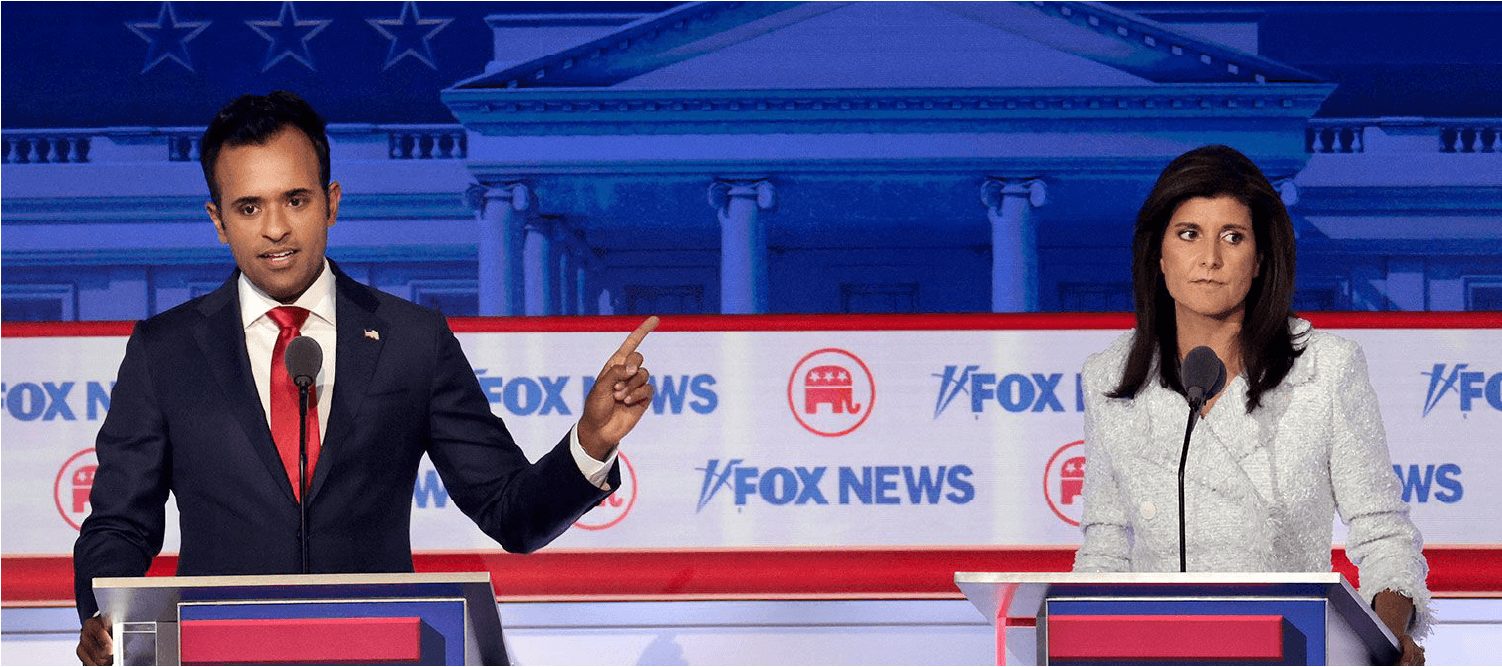Political Passion and the Pitfalls of Polling

Donald Trump testified in his New York civil fraud trial this week while new polling data from The New York Times and Siena college simultaneously reported indications of swelling support in key battleground states. News outlets are clamoring about the significance of the flip in stated preference for Trump in Arizona, Nevada, Georgia and the historically big blue wall of Pennsylvania, Michigan, and Wisonsin, The Lincoln Project is saying the “poll sucks”, and Trump’s GOP challengers are claiming the court case is the beginning of the end.
With so much uncertainty on whether the polling numbers can be trusted, we dug into our tracking data of the voter non-conscious to find those sentiments that voters feel, but aren’t easily captured in typical political polling.
Implicit appeal for Trump has risen from July through October. However, that rise is siloed within the Republican party, and is regionally specific. In fact, the high implicit appeal for Trump is driven primarily by Republican voters in the South and Sun Belt. These data support what is being reported in the explicit polls in GA, AZ and NV. Yet, looking at the neutral to negative appeal of Trump among Republican voters in the Northeast and Midwest draws the NYT/Siena poll numbers in PA, WI and MI into question.
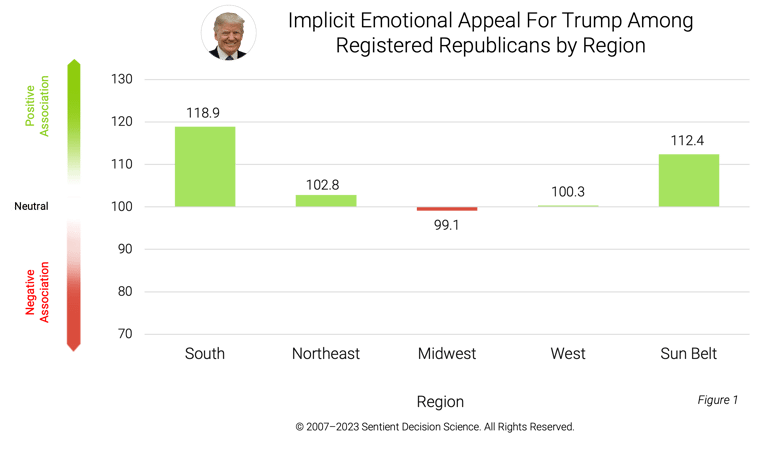
Is Trump facing the same issue that Hillary Clinton faced against him in 2016? Are voters explicitly stating they favor him, while implicitly having negative feelings that aren’t showing up in the polls?
To dig into the question of whether ballot booth behavior might not follow the stated preferences of the telephone polls, we analyzed Independent and Democrat voter implicit appeal for Trump in the same regions.
It is important to note that Independent voter implicit appeal for Trump has remained negative from July through October. In fact, Independent voters still have significantly negative implicit associations with Donald Trump in nearly every US Region. In Figure 2 below, we see that the immediate emotional reaction to the face and name of Donald Trump is negative among Independents in the Northeast and the Midwest. This spells trouble for the current GOP frontrunner if the election were held today.
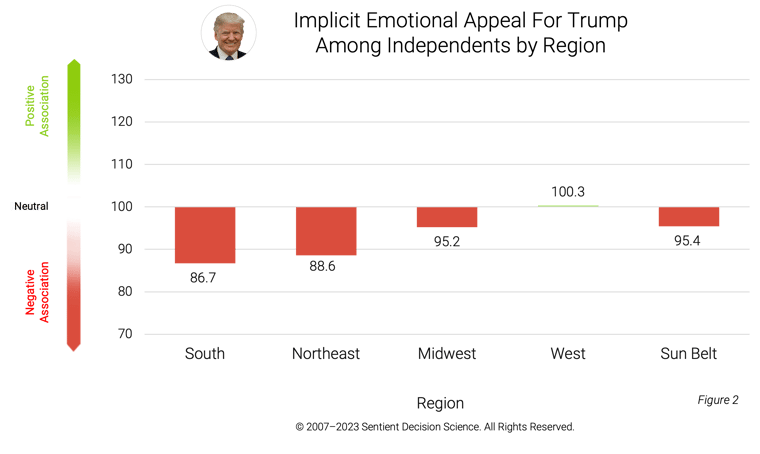 To complete the implicit picture of Former President Trump, not surprisingly, Democrats carry the most negative implicit associations. Across the board, Democrats in every region feel automatically negative when imagery of Trump is primed in their minds. Significantly, the negative reaction to Trump is most pronounced in the Midwest, with a flip vote eviscerating score of 74 among Democrats. These true implicit results draw serious questions on the predictive validity of the NYT/Siena poll results in WI, MI and PA.
To complete the implicit picture of Former President Trump, not surprisingly, Democrats carry the most negative implicit associations. Across the board, Democrats in every region feel automatically negative when imagery of Trump is primed in their minds. Significantly, the negative reaction to Trump is most pronounced in the Midwest, with a flip vote eviscerating score of 74 among Democrats. These true implicit results draw serious questions on the predictive validity of the NYT/Siena poll results in WI, MI and PA.
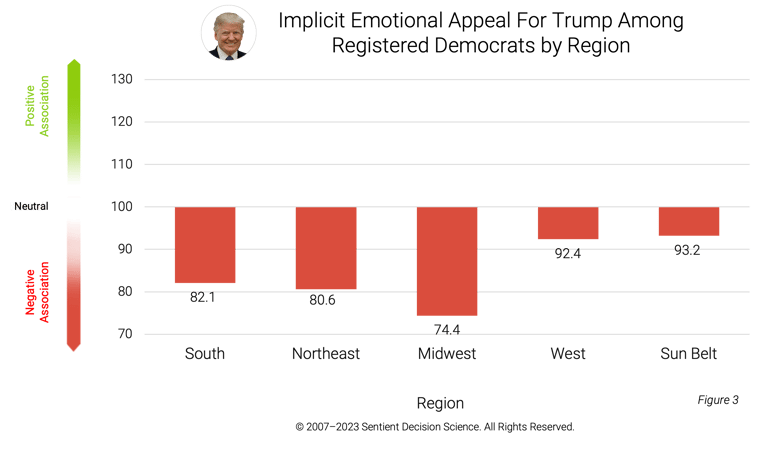 But that brings us back to Biden. In reelection years, the outcomes are typically a referendum on the incumbent, and the implicit perceptions of President Biden have significantly changed from Election Day three short years ago. Just days before the 2020 election, Biden’s implicit appeal among Independents in key swing states showed an advantage over Trump.
But that brings us back to Biden. In reelection years, the outcomes are typically a referendum on the incumbent, and the implicit perceptions of President Biden have significantly changed from Election Day three short years ago. Just days before the 2020 election, Biden’s implicit appeal among Independents in key swing states showed an advantage over Trump.
As can be seen in Figure 5 below, Biden isn’t enjoying that same advantage today. In the Northeast, Biden is leading among Independents, but note neither he nor Trump evoke immediate positive emotions among these voters. And, in the Midwest, the pattern flips, with both candidates evoking immediate negative emotion, and Trump holding the advantage.
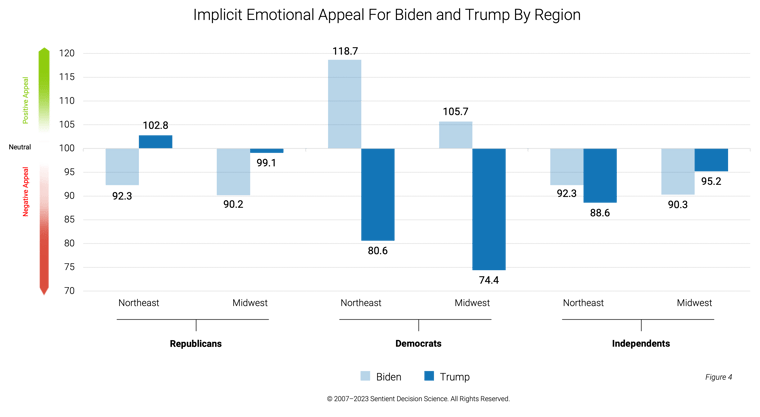 Are there any positive notes for Biden? Yes, it is quite clear that passion is on the side of the Democrats in the Northeast and Midwest. Passion leads to voter turnout, and a swell of Democrat voters on election day would tip the scales in Biden’s favor. These election day realties are hard to capture in a poll, similar to what the NYT and Siena College chose to publish, that asks a likely voter who they would vote for if the election were held today.
Are there any positive notes for Biden? Yes, it is quite clear that passion is on the side of the Democrats in the Northeast and Midwest. Passion leads to voter turnout, and a swell of Democrat voters on election day would tip the scales in Biden’s favor. These election day realties are hard to capture in a poll, similar to what the NYT and Siena College chose to publish, that asks a likely voter who they would vote for if the election were held today.
However, equally important, is the insight that the passion we’re observing is driven more by unfavorable perceptions of Trump rather than favorable perceptions of Biden. Would Democrats still show up in droves to vote if Trump were not the GOP candidate? This represents a vulnerability for Biden, and a significant opportunity for alternative GOP candidates to seize.
Taken as a whole, these results suggest that:
- Passion, for or against these two candidates, is actually stronger among Democrats.
- There is opportunity for an alternative Republican candidate, given the moderate to negative appeal of Trump among Republicans in key regions, and the clear passion against Trump among Democrats.
- The swing vote is still very much in play.
If we’ve learned any lessons from elections of the past, perhaps it’s time for both frontrunners to take a trip to Wisconsin.

